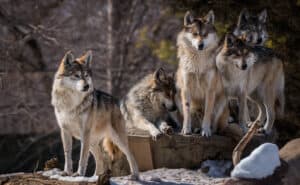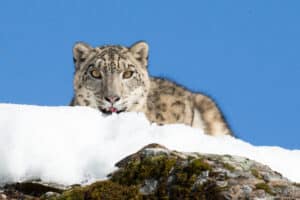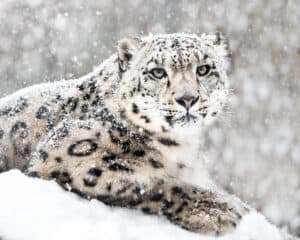The snow leopard, Panthera uncia, can run up to 35 to 40 miles per hour over short distances. This big cat has adaptations that help it to hunt and thrive in steep and rocky terrain. Snow leopards, according to the IUCN Red List, are a vulnerable species with only a few thousand mature individuals. They live primarily in the mountainous regions of central Asia. They range over portions of 12 countries, from the Himalayas north to Russia. These extremely agile predators can easily jump 30 feet, or up to 50 feet when pursuing prey downhill. Although snow leopards are not the fastest of the big cats, they have amazing moves on both horizontal and vertical planes.
Snow Leopards Are Well Adapted to Mountain Life
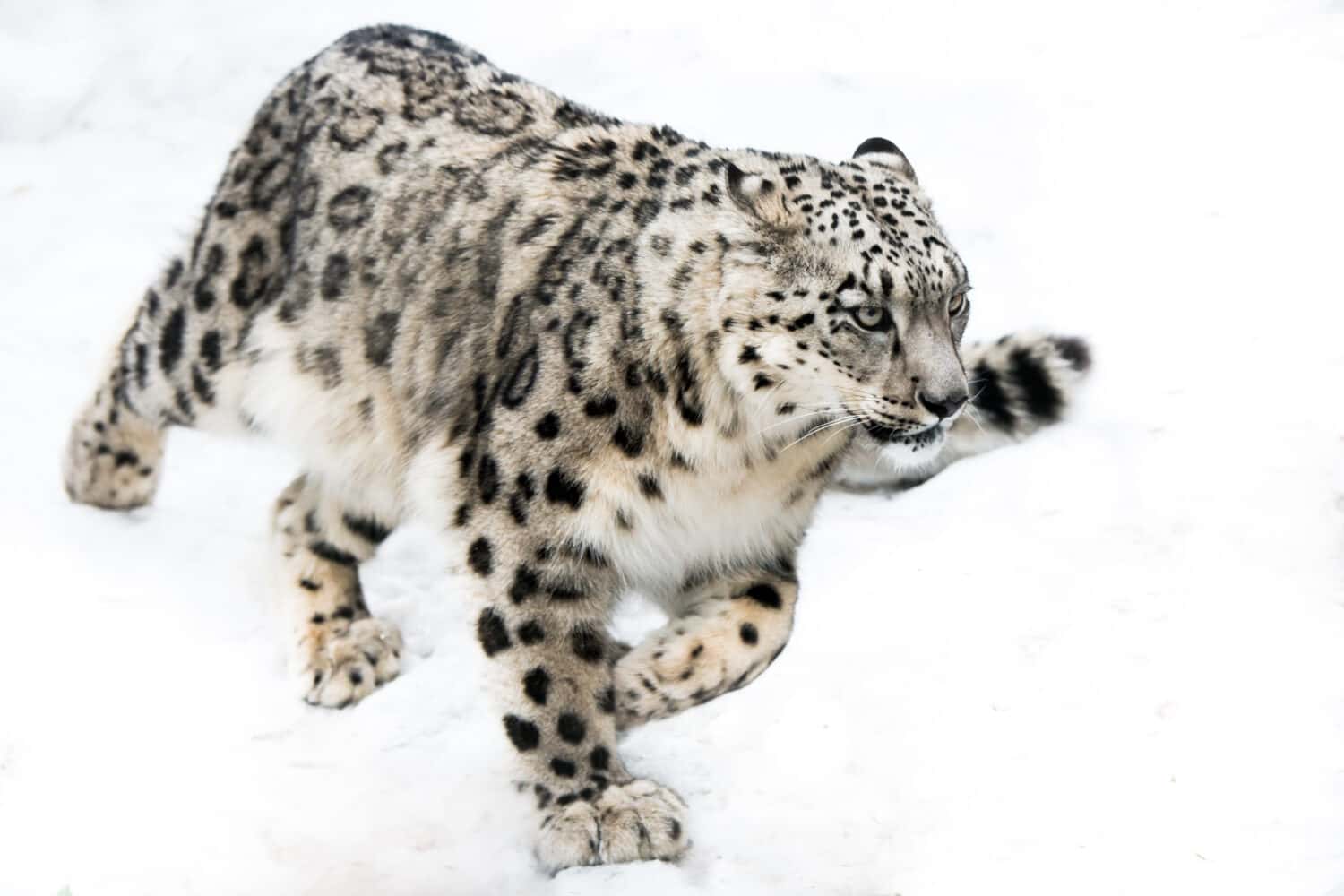
The snow leopard,
Panthera uncia, can run up to 35 to 40 miles per hour.
©Abeselom Zerit/Shutterstock.com
Unlike the cheetah, which lives primarily in flatter grasslands, snow leopards spend much of their lives on steep, uneven terrain. They have adapted well to mountain life. Although they can run at a sustained speed of 35 to 40 miles per hour for a short distance, they tend to ambush their prey rather than engage in a prolonged chase. Snow leopards have fur with markings that help them to blend in against their rocky habitat. They also have tails nearly as long as their bodies that they use to balance when running and leaping along steep grades.
Snow Leopards Have Unbeaten Jumping Abilities
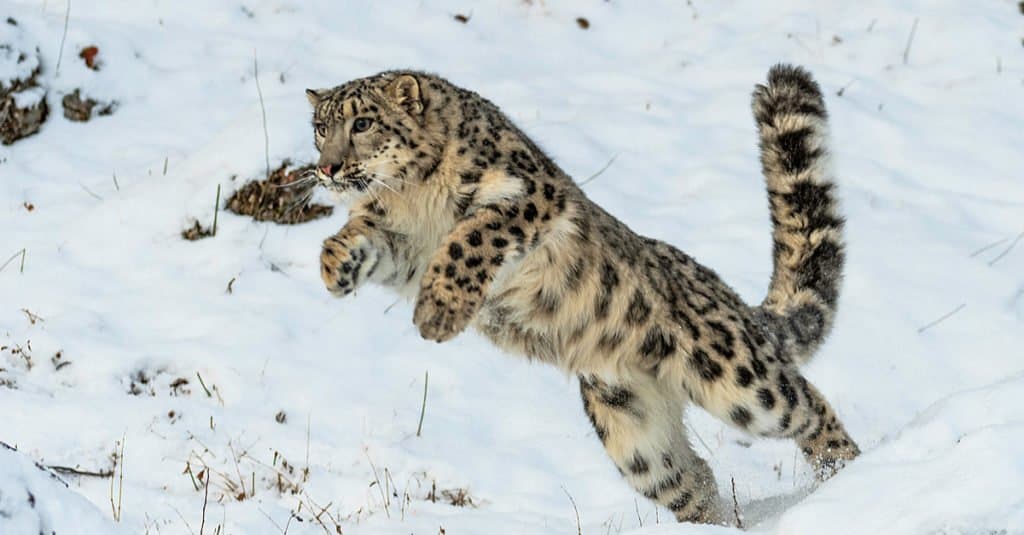
Snow leopards have unrivaled jumping abilities.
©Chris Desborough/Shutterstock.com
What snow leopards may lack in overall speed, they more than make up for in jumping abilities. A snow leopard can jump from a stand up to 18 feet vertically. It can jump horizontally up to 30 feet. When going downhill, snow leopards can cover as much as 50 feet in a single leap. Other large cats, such as cougars, also have impressive jumping abilities, but none exceed those of the snow leopard.
How Fast Are Snow Leopards, Compared to Other Cats
A few other big cats run faster than snow leopards. Most of them are better adapted to chasing down prey over distances than ambushing them on the side of a mountain. Other cats run slower than snow leopards at their top speeds. Let’s take a look at how fast other big cats run, as compared to the snow leopard.
Cheetah
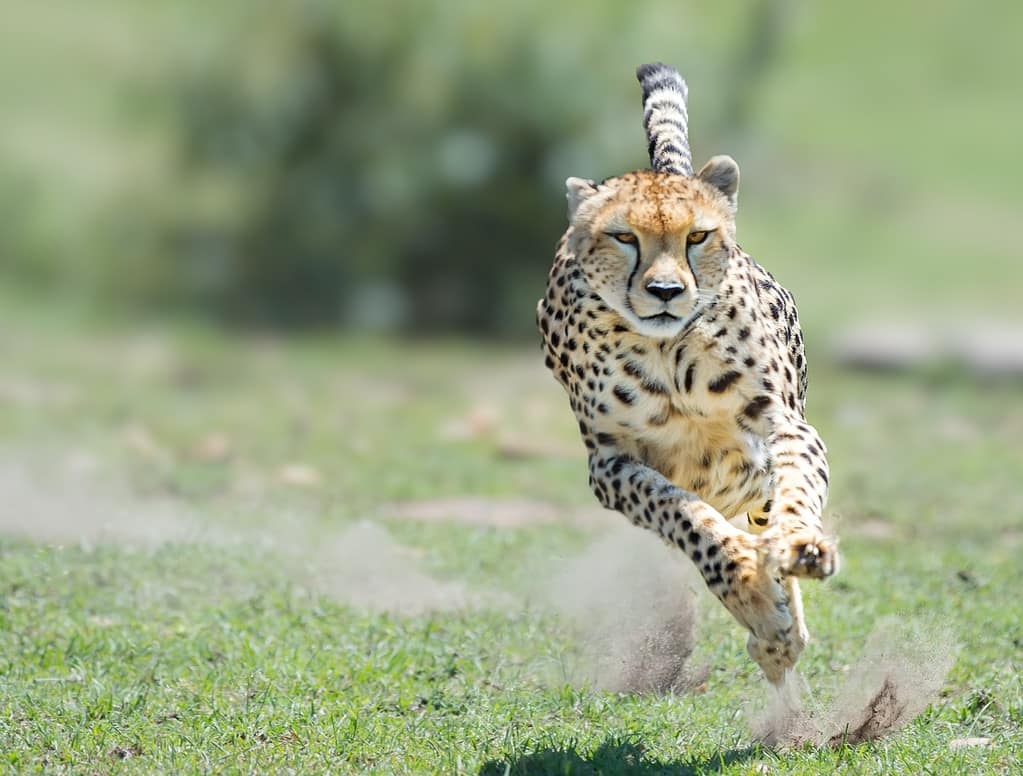
The cheetah,
Acinonyx jubatus, is the fastest cat. It can run 50 to 80 miles per hour.
©Kandfoto/iStock via Getty Images
The cheetah, Acinonyx jubatus, can run up to 50 to 80 miles per hour. They live in the grasslands of southern and eastern Africa. They often prey on gazelles and impalas which can run more than 50 miles per hour over considerable distances. Cheetahs do attempt to get as close as possible to their prey before beginning the chase. The patterns on their coats help them to blend into the grass as they sneak up carefully.
Serval
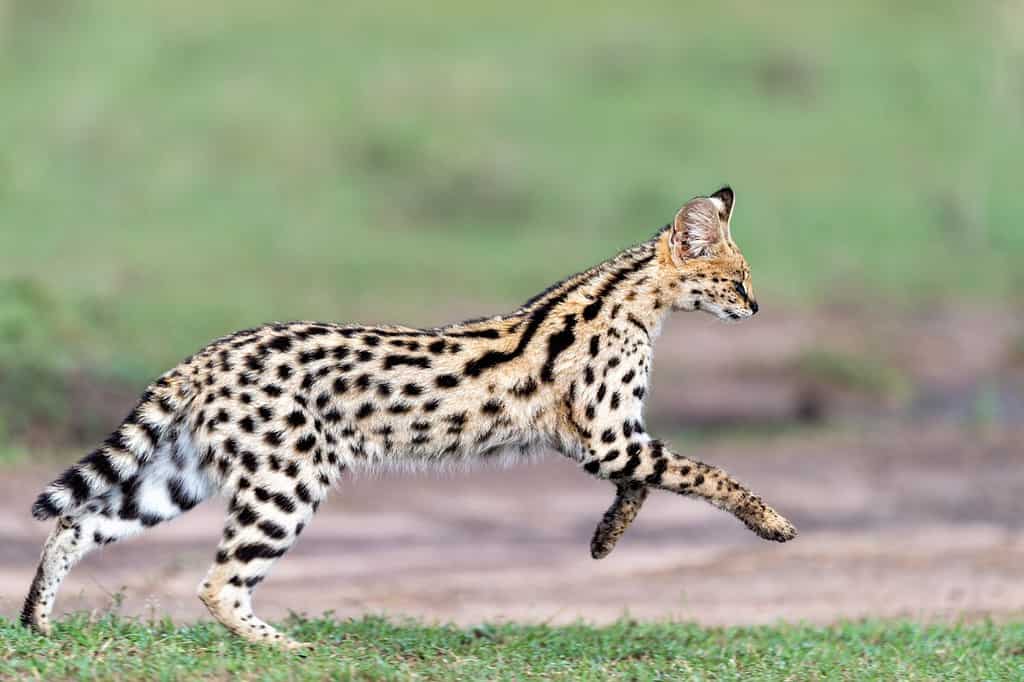
The serval,
Leptailurus serval, can run a little more than 50 miles per hour.
©Reto Buehler/Shutterstock.com
The serval, Leptailurus serval, is small compared to other big cats, weighing in at around 40 pounds at the most. But this cat, native to Africa, is the second fastest species, reaching speeds of slightly more than 50 miles per hour.
Jaguar
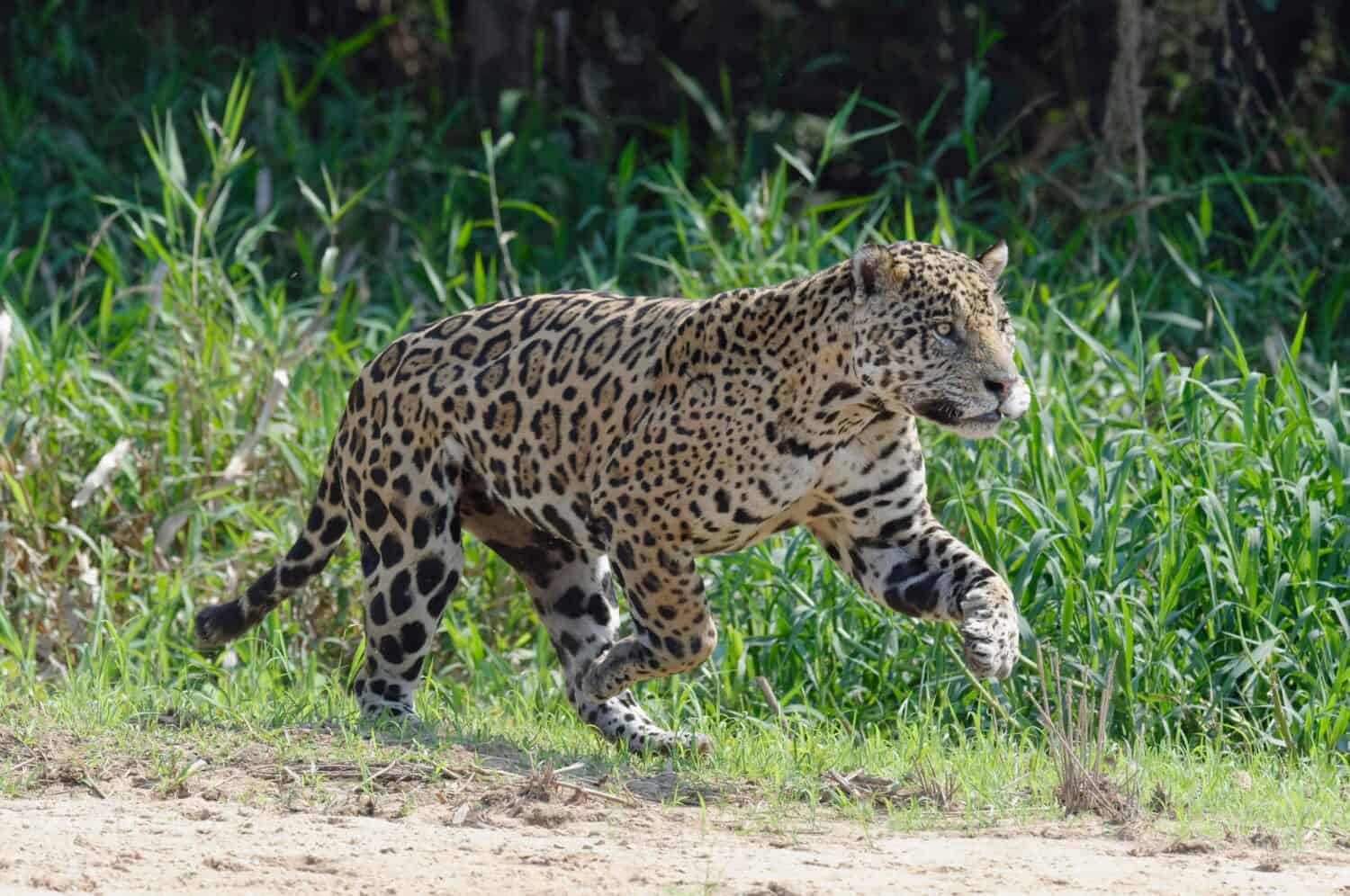
The jaguar,
Panthera onca, can run up to 50 miles per hour.
©imageBROKER.com/Shutterstock.com
The jaguar, Panthera onca, is the third-largest cat species in the world, and the largest in the Americas. It ranges from the southern part of the United States through Mexico, Central America, and much of South America. Jaguars run at speeds up to 50 miles per hour. This speed is especially impressive, given that jaguars usually inhabit forested areas.
Puma
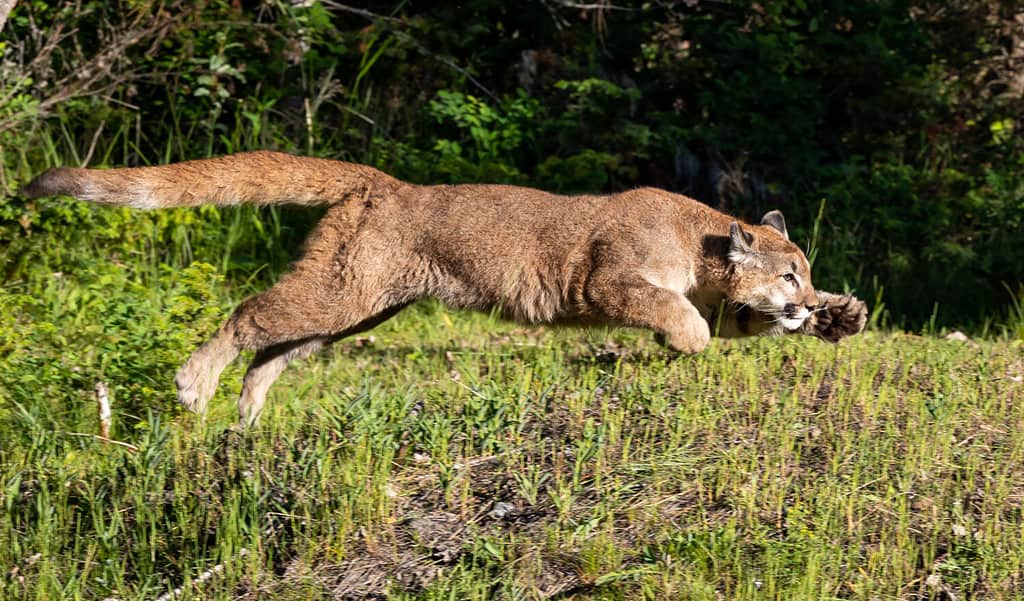
Pumas,
Puma concolor, also known as cougars or mountain lions, can run from 40 to 50 miles per hour.
©Holly S Cannon/Shutterstock.com
The puma, Puma concolor, goes by many names. Sometimes called a mountain lion, a cougar, catamount, or even jaguar, this large cat lives in all sorts of habitats across North America, Central America, and South America. Pumas can run up to 50 miles per hour over short distances. They prey on animals as large as deer and as small as rodents.
Lion
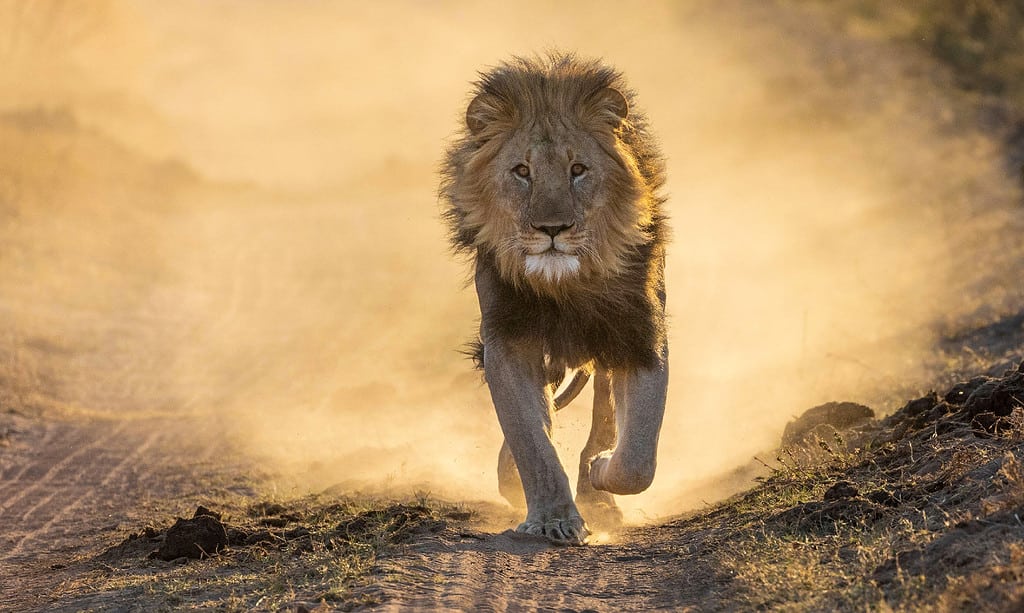
The lion,
Panthera leo, lives in Africa and India and can run up to 46 miles per hour.
©iStock.com/Wirestock
The lion, Panthera leo, lives mainly in Africa with a small population in India. Often called the king of beasts, the lion is the second largest cat and fifth on this list with a top speed around 46 miles per hour. However, they typically sprint between 30 to 40 miles per hour, and only for short distances. Lions tend to stalk their prey before beginning a chase, and sometimes hunt in groups.
Tiger
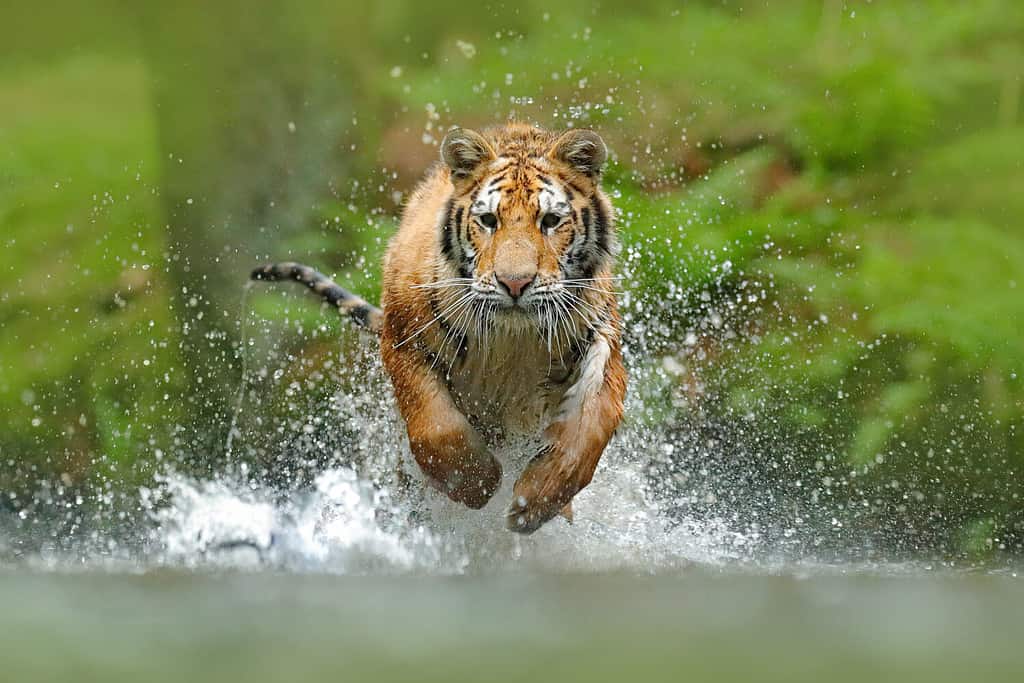
A tiger,
Panthera tigris, can run up to 40 miles per hour.
©Ondrej Prosicky/Shutterstock.com
The tiger, Panthera tigris, is an endangered species, extinct over most of its historic range. Tigers, the largest of the big cats, now live in scattered populations in Asia. These cats live mainly in forested or semi-forested habitats. They can reach speeds of up to 40 miles per hour when sprinting.
Leopard
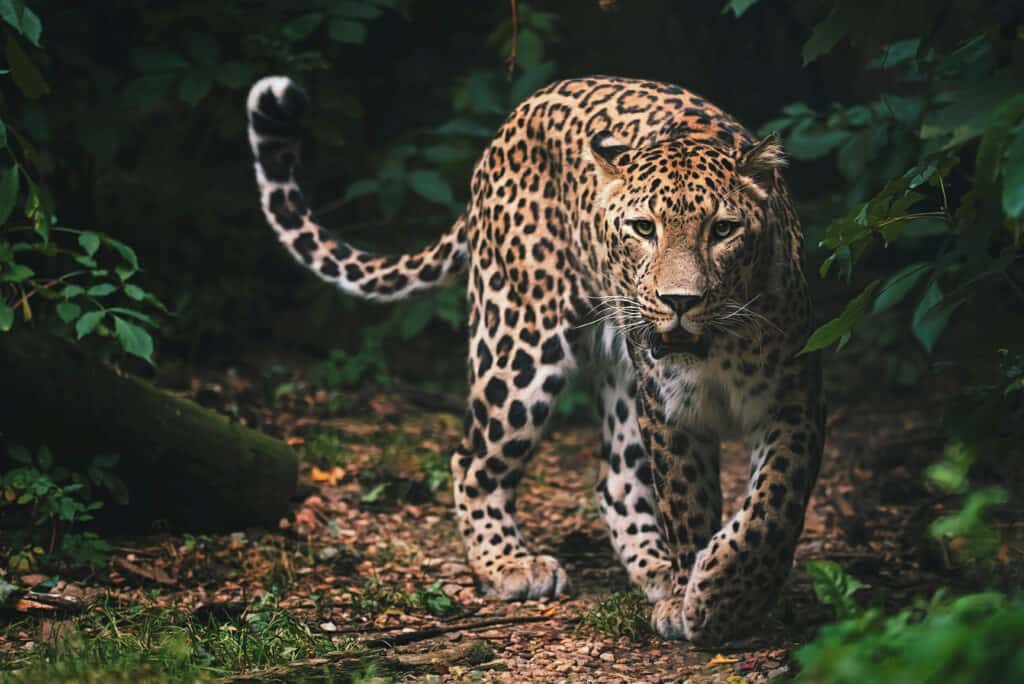
The leopard,
Panthera pardus, can run approximately 36 miles per hour.
©Ondrej Chvatal/Shutterstock.com
The leopard, Panthera pardus, lives in Africa and Asia. Depending on the subspecies, leopards may prefer grasslands or wooded areas. They are adept climbers, and prey mainly on small, hoofed animals and other mammals, including primates. Leopards can run up to 36 miles per hour, plenty fast enough to catch their prey.
A Comparison of Top Speeds
So, how fast are snow leopards, as compared to other fast cats? They definitely are not the fastest, but that’s okay. When their speed combines with their agility and daring, they make a fierce predator adapted perfectly to their habitat. Here’s a list of the cats included in this article, along with their top speeds.
| Species | Speed |
|---|---|
| Cheetah | 50 to 80 miles per hour |
| Serval | More than 50 miles per hour |
| Jaguar | Up to 50 miles per hour |
| Puma | Up to 50 miles per hour |
| Lion | 46 miles per hour |
| Tiger | Up to 40 miles per hour |
| Snow Leopard | 35 to 40 miles per hour |
| Leopard | 36 miles per hour |
The photo featured at the top of this post is © Abeselom Zerit/Shutterstock.com
Thank you for reading! Have some feedback for us? Contact the AZ Animals editorial team.



